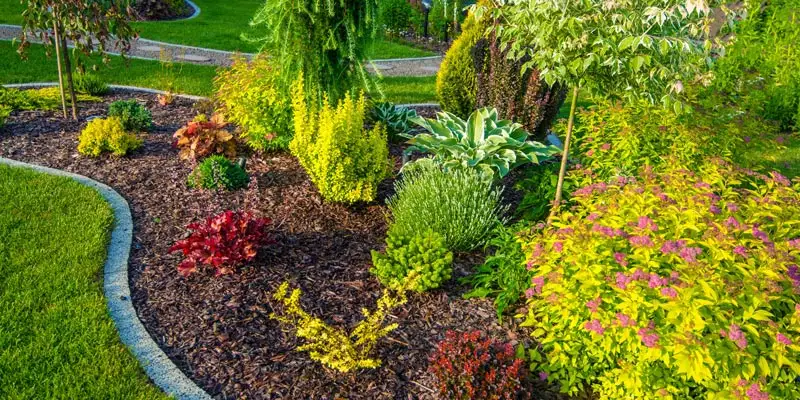The Of Landscape Design
The Of Landscape Design
Blog Article
The 9-Second Trick For Landscape Design
Table of ContentsLandscape Design for BeginnersThe Basic Principles Of Landscape Design The Greatest Guide To Landscape DesignSome Of Landscape Design
Formal design theme. Credit Report: Gail Hansen, UF/IFAS The lawn is an expansion of the home where a selection of activities take place. A yard can usually be split into 3 areas: public (the front backyard), exclusive (the backyard), and service (normally the side backyard). The area of task areas depends mainly on the sort of location, the dimension of space required, the type of activity, and the preferred proximity to other activities and structures (Landscape Design).
The outside wall surface of your house frequently works as the very first wall surface or beginning factor of an outdoor area. Incompatible usages must be divided, and associated activities, such as cooking and eating, need to be created to make the lawn much more efficient and delightful. When using hardscape to develop areas, use construction product comparable to that used in your house for continuity from your house into the garden.
Linked rooms. Debt: Gail Hansen, UF/IFAS Using similar hardscape features and duplicating plants draws the eye around the garden. Crucial points along the road can be emphasized with growings or functions that draw attention and encourage motion in a particular direction. Relocating along the course takes a person from one location to the following and enables the user to have a selection of experiences.
From a style perspective, plant materials have three significant features in the landscape: aesthetic, architectural and practical. Cosmetically, plants develop an aesthetically pleasurable atmosphere and structurally plants arrange and specify spaces.
The Definitive Guide for Landscape Design
For emotional comfort plants are utilized as physical or implied barriers for personal privacy and safety. Physical obstacles obstruct both the sight and access to a space and consist of fencings, walls and plant hedges. Landscape Design. Indicated barriers, typically low growing plants, block gain access to however not the sight (Figure 9). Other functions of plants include cleaning up the air, stopping disintegration and dirt loss, preserving wetness in the dirt, and returning raw material to the dirt.
Physical and implied obstacles. Credit Rating: Gail Hansen, UF/IFAS For these reasons, the kinds of plants to be made use of (such as trees, hedges, or groundcovers) must be selected in the beginning of planning. Plant kinds are picked for their useful abilities to make sure that their future objective and needed space can be considered at the very same time.
The above plane, the vertical aircraft and the ground airplane should all be considered to produce room. Once the form of a plant bed has been established, the plants need to be massed (organized) and layered to achieve visual unity and the wanted amount of enclosure. The size of a plant mass will certainly rely on the complete size of site the yard, the dimension of the individual plants in the mass, and the focus or influence desired from the plant product.
Each plant mass remains in front of, behind, or beside, another mass. Number 11. Straight plant layers. Credit: Gail Hansen, UF/IFAS Number 12. Upright plant layers. Debt: Gail Hansen, UF/IFAS Duplicating plants within a mass and duplicating masses with comparable plants links the garden together. The specific plant features need to be taken into consideration to successfully layer and mass plants.
Some Ideas on Landscape Design You Should Know
All plant make-ups begin with the major structure plants, the huge, mainly evergreen background plants-such additional resources as the trees and huge shrubs. These plants different or enframe spaces, regulate the size of the room, and supply the starting point for choosing the proper qualities of the 2nd layer, midground plants, for massing and infill.
Crucial factors in the garden must be highlighted by the use special plants, distinct structures, or yard ornaments. Marking limits or entries to spaces can be performed with entrances, arbors, and actions, or through the use of unique and vivid plants. The form and/or design motif of the garden will frequently assist identify the vital points and exactly how they must be highlighted.
Other crucial places in the backyard are focal points, which is made use of to aesthetically organize a designed area. Various viewpoints or viewpoints can reveal various make-ups in the landscape that might call for a selection of focal points.
The Ultimate Guide To Landscape Design
Plant kinds. Credit Rating: Gail Hansen, UF/IFAS After kind, appearance is the next like this dominant function of a plant; rugged, medium and great appearances can be used for comparison and focus in the landscape.


The positive aroma of plants, the noise of wind in the trees, the audio and appearance of water, and the colors and structures of sculptures, pots and garden furniture all include to the experience of the yard. One information that is typically ignored is the result of light on the aesthetic appeals of the plants.
The whole yard adjustments in feature and look throughout the day, and the program of a year, as the light and temperature modification from morning to night and season to season. Plant choice have to consider a plant's development rate, its mature size and type, and the upkeep it will call for.
It is necessary to know the ultimate fully grown size of plants so they can be put in the right location and spaced correctly when they are installed. Offering plants space to grow is a difficulty due to the fact that the usual fully grown size is typically based on optimal growing problems and the ecological conditions of a site may create a plant to grow bigger or remain smaller sized.
Report this page